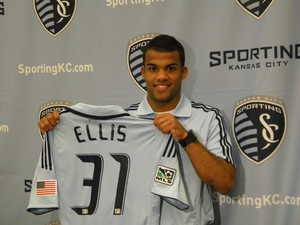by john cartwright
For years coaching here has relied on the use of Phase-play as a method for teaching specific situations or ‘slots’ in the game. These phases, be they for the use of an individual or a small group, are constructed by the coach to familiarize players with either individual situations or aspects of team-play. I feel that this type of coaching practice has several flaws and is unlikely to produce satisfactory improvements, in either individual or team performance.
I believe Phase-play methods are simply a carry-over of the structured development methods used here when coaching skills and movements for the game. This method of isolating a situation and then practising it as a singular ‘slot’ in play, does not satisfy the important playing ingredients of realistic continuity in the game. There are two specific faults with Phase-play practice:
1. It does not involve enough playing situations prior to or beyond the actual phase of play under scrutiny.2. The recognition of a Phase-play situation and acting on it successfully in the competitive ‘heat’ of a match is highly unlikely.
Staged restart situations are more likely to prove successful from Phase-play practice, but more fluid and open play situations tend to be less so simply because they are more difficult to construct or recognize in a competitive atmosphere.
I have always believed that an on-the-ball situation developing in one area of the field derives from what has occurred in the area from which the ball came and is dependant on the actions of players in the area(s) into which the ball may go. Phase-play often limits practice to singular situations, thus reducing more expansive options that may be available to players.
Restricting game-flow opportunities from area to area to players in practice is not the way to develop spontaneity, integration and game variations in those players during competitive match-play.
The movement of the ball and players through def/mid/att. areas of the field with the conclusion of a goal is what the game is about. Movement of players as well as the ball through these areas requires ability, concentration, timing and game understanding. Combined practice through these areas that offers players a total look at all the possibilities, options and needs is what is required if we are to develop the quality of player that can play at the highest levels. Because of the competitive nature of football, the matter of interference to the flow of the game is a vital issue if success is to be achieved by both the individual and the team. Whether in att. or def. mode players must be capable of making and changing decisions on situations speedily and correctly. Unless players follow a development program based on realistic practice involving playing alternatives and options and forces changes of decisions to be made as happens in a game, it could quite easily be said that the practice time is wasted.Phase-play practice resembles the methods used in the theatre when a Director wishes to modify or change a section in the performance; he/she reconstructs the section in question, it is rehearsed and included in the next performances. This may be suitable for the theatre where action prior to the newly learned ‘slot’ and action immediately after it remain unchanged, but it does not satisfy the needs of a game that requires the immediacy of choices and responses to situations that are never exactly the same. The reliance on pre-determined practice methods and ‘straight-line’ thinking has produced ‘straight-line’ players who can only play ‘straight-line football’. The use of unrealistic practice has been at the forefront of our football decline and Phase-play practice is yet another example of the orderly, classroom mentality that dominates our coaching; — organization and simplicity are preferred to spontaneity and skill!
A ‘chicken and egg’ situation (what comes first?) is evident in our game; is it, poor individual skill that needs a simplistic playing style, or has a simplistic playing style only required poor skill levels to play it?
Either way the result has proved a disaster for our game. From the teaching of individual skill to group and team instruction, coaching here has taken individual fantasy from the game and replaced it with combined futility.
Until we open our minds and subsequently our coaching methods, we will continue to produce football mediocrity and have the audacity to call it football greatness!





